What makes a good photograph? Here are a few personal thoughts on how to read an image
I like images that tell stories and for this reason, I tend to lean towards documentary and candid photography although I personally like to call this, observational photography.
When I have a camera in my hand, I am constantly looking for something different to what others might see. This often brings me into conflict with judges who are technically biased or conventional in their output as my photos can be a little right of center.
While I do take conventional photographs, I don’t go out of my way to seek them.
For this reason, technical imperfections can and often do sneak into images when you only have seconds to composé and press the shutter button. It’s a fact of life in candid photography and some of the best and most highly aclaimed images on the planet wouldn’t win in club photography competitions!
For me then, and while technical competence is of course hugely important, the very best images are ones that tell a story and don’t take themselves too seriously. It doesn’t much matter whether that story is of a social nature as long as it leaves you asking questions. It’s the story that matters.
For this reason when I hear someone saying “well, I just don’t get it” then I start to worry about their ability to read an image, to extract more from it than the obvious content itself implies.
For me, images that stay with me, that niggle and keep me coming back are in my opinion, the very best of all. If the simple pre-requisites of focus, composition and lighting are met, then I can forgive technically imperfect images in favour of those with exceptional content or with a strong message.
An example
So, let’s use the image below to talk about what makes a photo interesting or more importantly perhaps, what makes a good photograph!
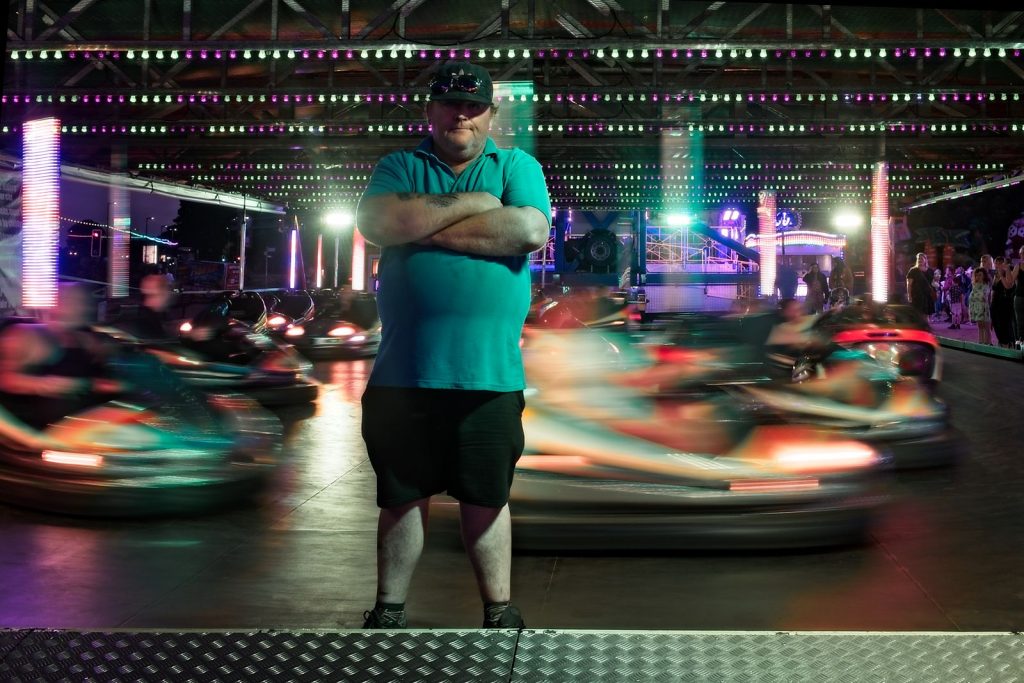
The Judges Comments
When judged recently in a photographic competition, the Judge, a photographer of long standing and experience said that while overall he like the movement in the background, he felt that there were too many distractions in the image overall.
For example, he didn’t like the brightness from the various light sources dotted around the scene.
He also said that the people back right were “distractions” and drew the eye away from the fairground worker.
As to the fairground worker himself, he felt that by not having his face fully lit that this reduced the value of the image overall. He would have preferred to see his face and eyes in more detail.
Fair comments perhaps from a judge looking at the technical merit of an image but what do I think?
What I like about this image.
- The subject is “purposely” captured against a complex moving background
- This is a “one off” shot – it’s in the moment and you either get it right or it’s a complete fail
- The perspective is well controlled, it’s “sharp enough” and it’s in focus
- Difficult lighting conditions have been managed well
- The image embraces technical skill as well as intent i.e it was purposely taken like this
- The image has an interesting mix of static tranquility and energy of movement
- The subject matter has a social leaning, we are capturing a moment in time which in some years time, could become a historical document
What I don’t like about this image
- The image has a green tinge which detracts somewhat, especially in the skin tones
- The shadows on the face in particular are a little strong – perhaps a little more aperture or ISO would have helped
- Placing the subject on a 3rd (left or right) would have improved the composition
- Adding a little additional exposure might have lifted the image
Here’s a re-imagining of this image with some of the suggestions implemented. What do you think?
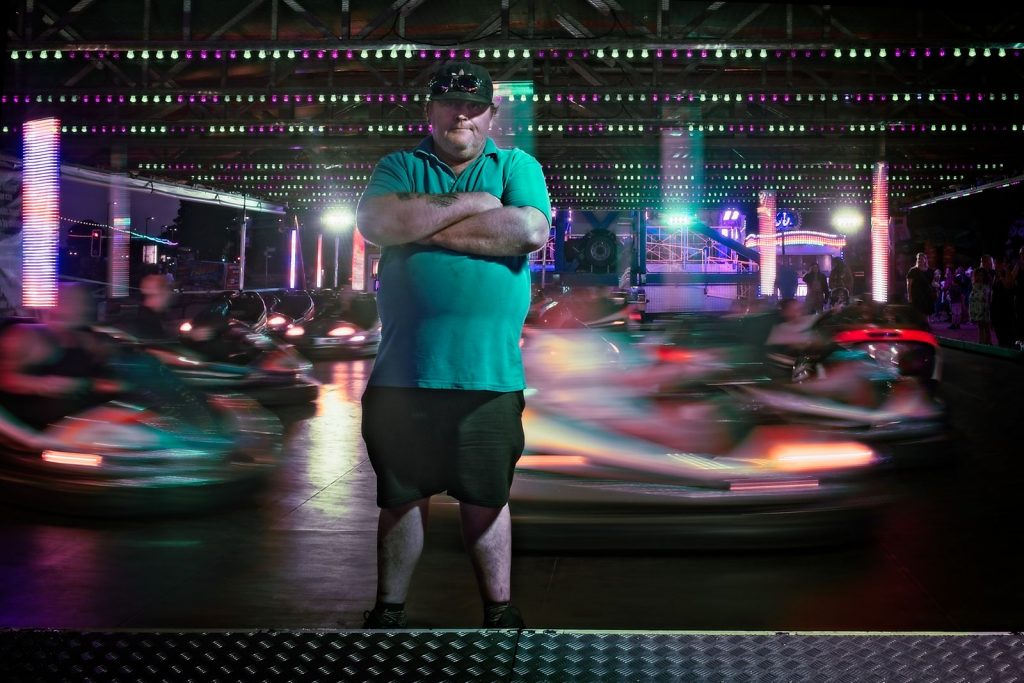
The changes made to this image were as follows.
- The green colour cast was greatly reduced
- The pin lights were better controlled ie brightness reduced
- A vignette was added to subdue the peripheral distractions and help focus the eye on the fairground worker
- A mask was added to the body of the fairground worker to lighten him
- An additional mask was added to the face to lift the shadows, face and eyes. This is subtle, you might not see much as this resolution
Here’s a comparison of the before and after. All of the work was done using ON1 PhotoRAW 2023 which has had some excellent new Ai masking technology added.
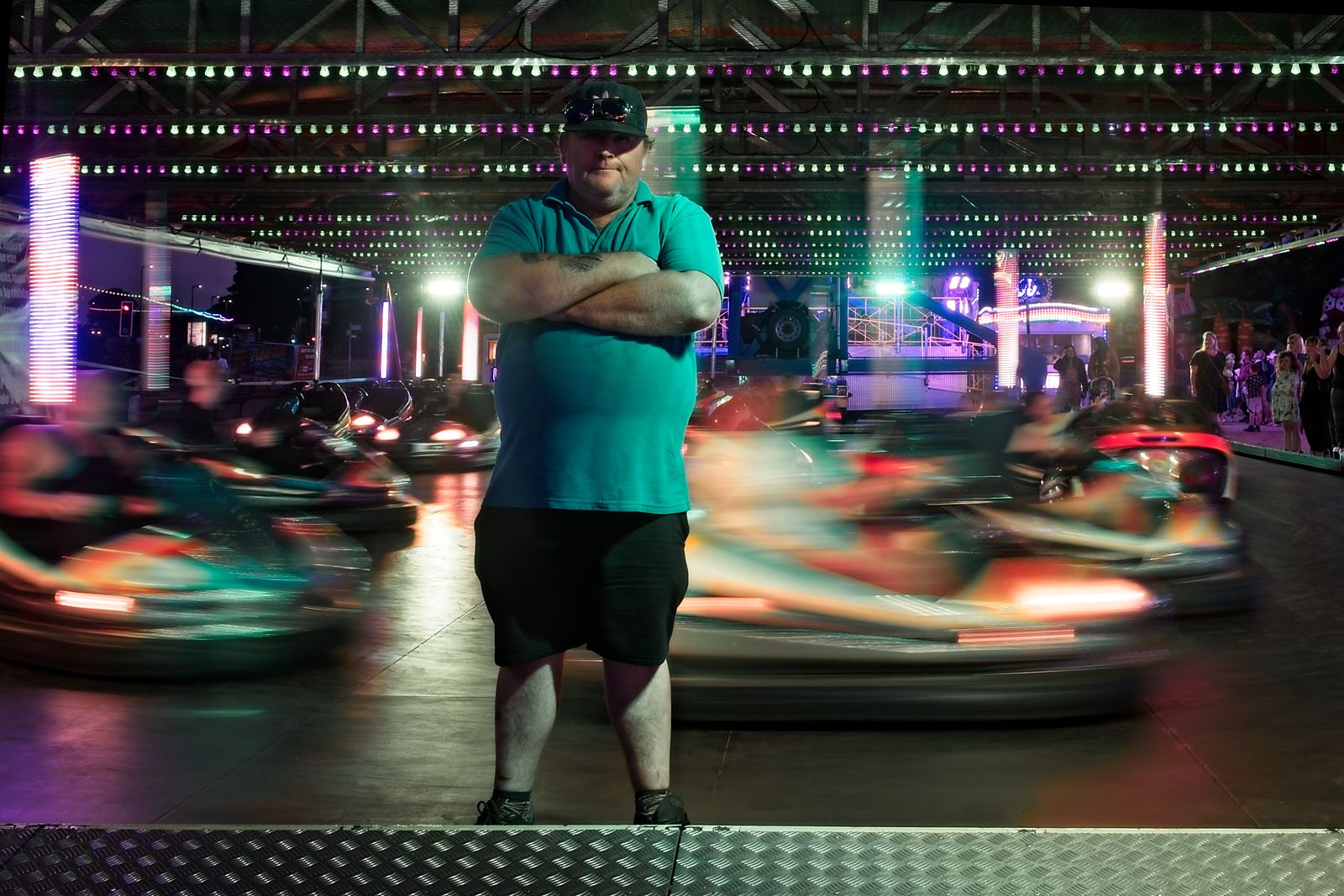
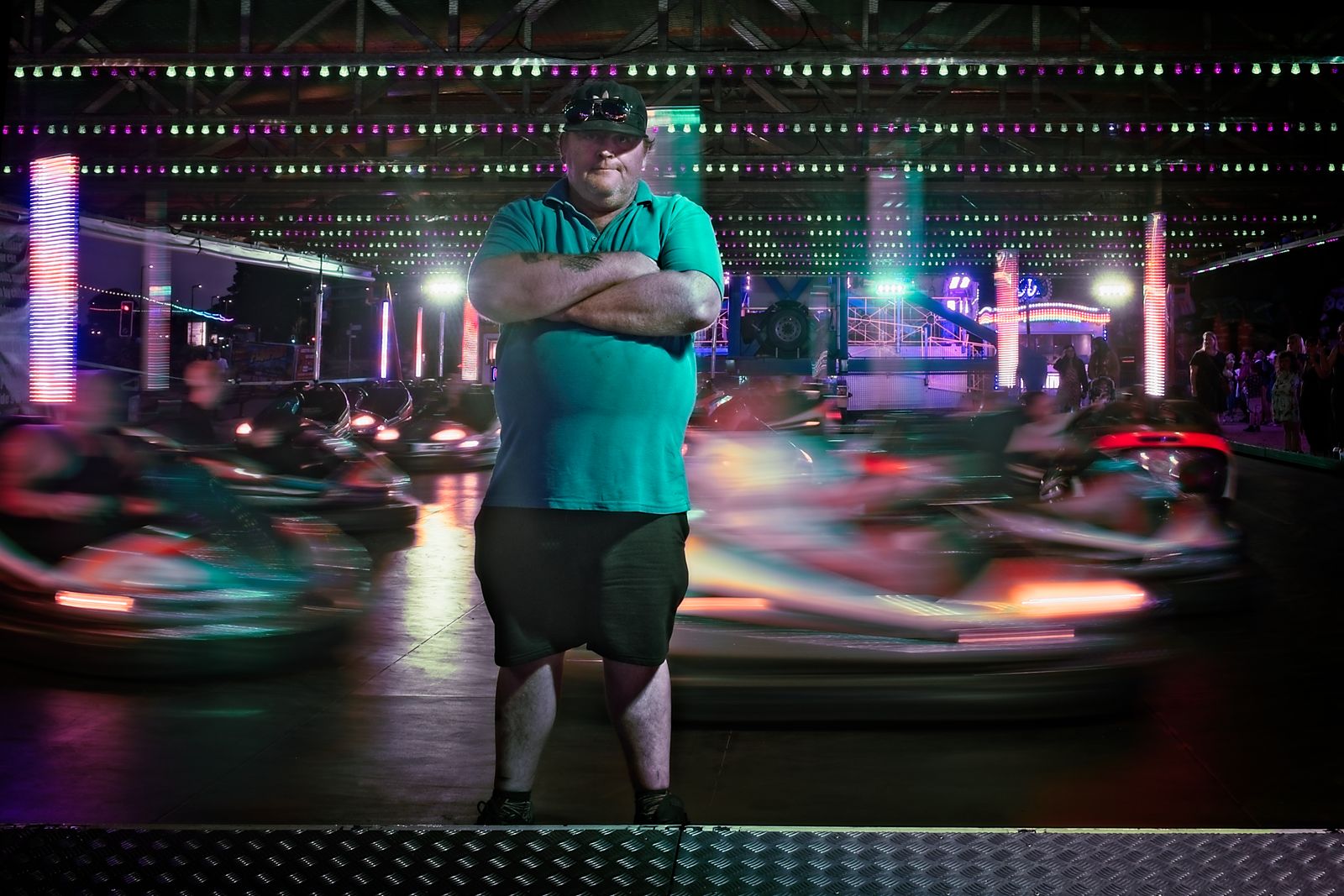
Some situations are technically demanding but can you recognise them?
Capturing photos of this type is technically demanding. The vast majority of photographers faced with night-time shots will most likely choose auto-everything and simply hope for the best. There’s no doubt that putting your camera on auto will result in something useable. What you can’t hope for though is to find the balance between the static subject and the moving cars. For that, you have to control the shutter speed and that can be trial and error.In a situation such as this one, where the fairworker has agreed to one photo, you need to have some confidence in your technical ability.
Every photographer is a judge!
When you look at this image, what do you see? Do you see what I see or are you simply looking at the technical imperfections? Do you see the social value in the image – in 100 years this image may will enthral it’s audience, or do you just think it’s a little dark? Do you recognise what the likely camera settings must have been to achieve the balance between the moving background or do you simply think that you can capture a great image using auto mode?
Leave a comment in the box below. I’d be really interested to hear what you have to say, any improvements you can offer or to simply ask questions about the camera, approach and post-processing.
Some other articles you may be interested in
- 5 candid photos that define your walk home
- Reducing Harsh Stage Lighting Colours in Post-Processing
- Improving an old damaged family photo using Affinity Photo
- Photo-Impressionism and creating art from the everyday
- When someone tells you off for taking their photo in public
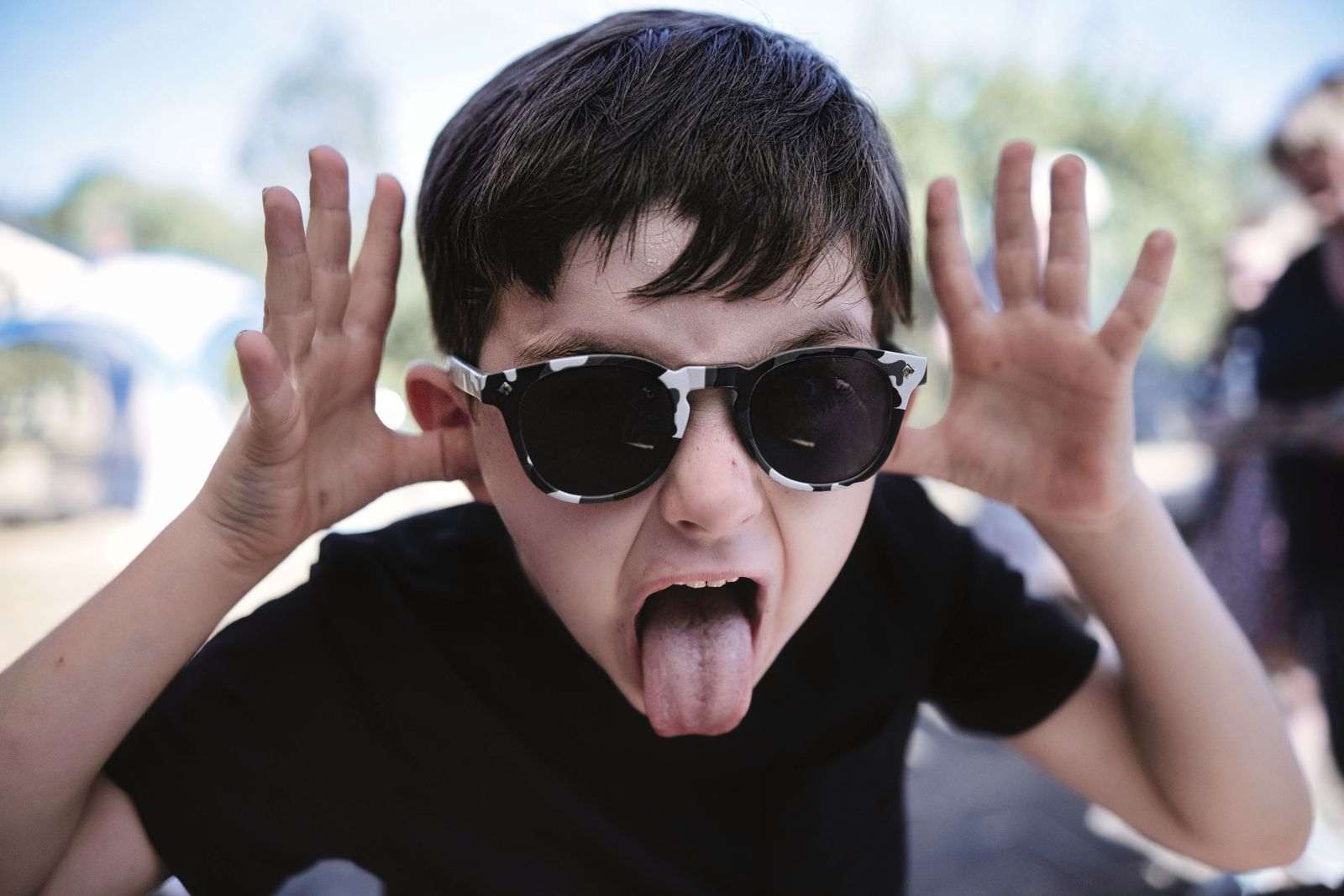
This is a great article Dave. It explains the vageries and conflicts associated with club photography and in particular, competition judging while providing an image that we can interrogate and make our own assessment of.